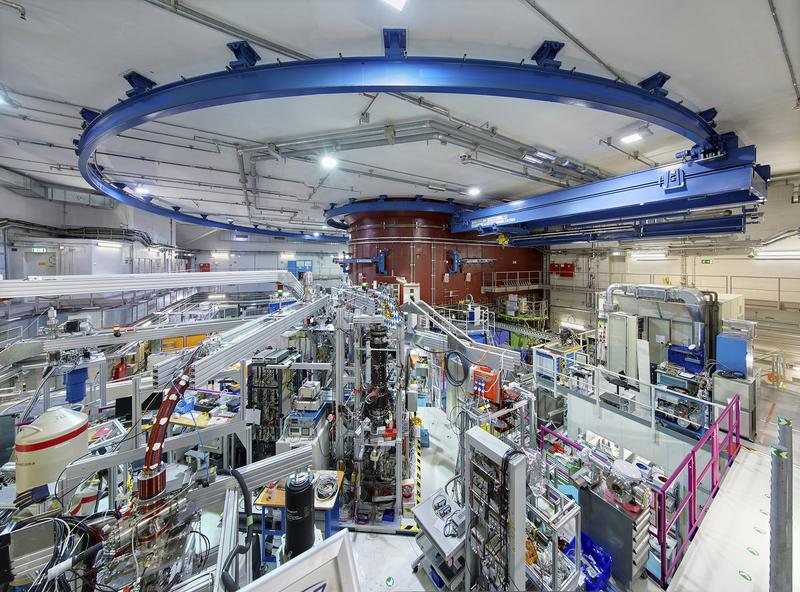
German Research Grant Fuels Development of Intense Positron Pulses

The positron source in Garching, where the new positron pulse source will be installed and operated. The reactor pool of FRM II is seen in the back (brown).
Photo: TUM, Bernhard Ludewig
The German research foundation DFG (Deutsche Forschungsgemeinschaft) has granted 750,000 euros for the research project “Creation of intense positron pulses on NEPOMUC” under its program “New Instrumentation for Research”. The project is a collaboration between the University of Greifswald, the Max Planck Institute for Plasma Physics (IPP), and the Technical University of Munich (TUM).
The three research institutions will develop a device to accumulate and store positrons and deliver these in pulses of unprecedented intensity. These will serve as tools to investigate a range of phenomena in physics, and are likely to open up new areas of experimental research.
Positrons, the positively charged anti-particles of electrons, are valuable analysis tools for physics. The strongest positron source in the world, delivering one billion positrons per second, NEPOMUC (NEutron-induced POsitron source MUniCh), is housed in Garching, Germany, at the TUM research neutron source FRM II.
The goal of the new project is to develop and then deploy a device that can accumulate positrons and then deliver them in intensive pulses to various experiments. The initial development will be done in Greifswald, at the University and IPP, and will then be integrated at NEPOMUC to expand its capabilities. “The planned multi-cell trap should make it possible to accumulate and deliver up to a trillion positrons in short, ultra-intense pulses” says Dr. Christoph Hugenschmidt, who is the lead TUM scientist in the collaboration. “We have already performed the detailed characterization of the NEPOMUC beam parameters needed for this, in collaboration with our IPP colleagues”.
The experience of the research group at the University of Greifswald with the trapping of charged particles will prove a strong foundation for the development of the positron trap. “We have developed and operated smaller traps with a variety of charged particles for decades. Recently, in collaboration with IPP, we have confined electrons in one of our superconducting magnets for up to an hour. This gives us confidence to go forward with these ambitious plans for positron storage and accumulation”, says Prof. Lutz Schweikhard from the Institute of Physics at the University of Greifswald.
The intense positron pulses will allow for new areas of research, including new types of experiments. This may include more efficient production of antihydrogen, tests of the fundamental symmetry between matter and antimatter, or the production of large amounts of positronium, an exotic matter-antimatter atom consisting of an electron and a positron.
The research activity is particularly central for the initial creation of confined electron-positron plasmas. Such matter-antimatter plasmas will have exceptional properties. “We are currently working on the development of a superconducting levitated dipole for confinement of electron-positron plasmas” says Prof. Thomas Sunn Pedersen, a co-Director at IPP. “We have already injected positrons into a similar magnetic configuration with over 90 per cent efficiency”. Thus, in addition to co-developing the positron pulse facility, IPP will be one of its first users.
Background information
In the NEPOMUC (NEutron-induced POsitron source MUniCh), neutrons from FRM-II impinge on a cadmium target which emits copious amounts of gamma rays. The energy of the gamma rays is converted into mass: electron-positron pairs are created. The electrons are filtered away with electric fields, and a positron beam is formed which can then be used for fundamental physics and materials research.
Joint press release of the Max Planck Institute for Plasmaphysics, the Technical University of Munich and the University of Greifswald












